Paul Whiteman talks about George Gershwin and the creation of Rhapsody in Blue
____________________________________________
page originally published on 30 March 2010; latest edit: 30 November 2021
____________________________________________
This interview with Paul Whiteman is an extract from a set called George Gershwin Remembered, an hour-long radio documentary first aired by the Canadian Broadcasting Corporation in the spring of 1961. In a review of George Gershwin Remembered (link updated, 11/30/2021) at AllMusic.com, reviewer William Ruhlmann says:
[T]he narrator and interviewer Tony Thomas assembles a biography and appreciation of George Gershwin by using his own commentary, rare and vintage recordings, and interviews with several people who knew Gershwin…Paul Whiteman…provides a detailed account of the rushed circumstances surrounding the composition of “Rhapsody in Blue.
From the Wikipedia page on the George Gershwin composition Rhapsody in Blue:
Rhapsody in Blue: History
Commission
After the success of an experimental classical-jazz concert held with French-Canadian singer Eva Gauthier at Aeolian Hall on 1 November 1923, band leader Paul Whiteman decided to attempt something more ambitious.[1] He asked Gershwin to contribute a concerto-like piece for an all-jazz concert he would give in Aeolian Hall in February 1924. Whiteman became interested in featuring such an extended composition by Gershwin in the concert after he had collaborated with Gershwin in the Scandals of 1922, impressed by the original performance of the one-act opera Blue Monday, which was nevertheless a commercial failure. There would certainly be call for revisions to the score; he felt that he would not have enough time to compose the new piece.[2]
Late on the evening of January 3, at the Ambassador Billiard Parlor at Broadway and 52nd Street in Manhattan, while George Gershwin and Buddy De Sylva were playing billiards, his brother Ira Gershwin was reading the 4 January edition of the New York Tribune.[2][3] An article entitled “What Is American Music?” about the Whiteman concert caught his attention, in which the final paragraph claimed that “George Gershwin is at work on a jazz concerto, Irving Berlin is writing a syncopated tone poem, and Victor Herbert is working on an American suite.”
In a phone call to Whiteman next morning, Gershwin was told that Whiteman’s rival Vincent Lopez was planning to steal the idea of his experimental concert and there was no time to lose.[4] Gershwin was finally persuaded to compose the piece.
Composition
Since there were only five weeks left, Gershwin hastily set about composing a piece, and on the train journey to Boston, the ideas of Rhapsody in Blue came to his mind. He told his first biographer Isaac Goldberg in 1931:
It was on the train, with its steely rhythms, its rattle-ty bang, that is so often so stimulating to a composer – I frequently hear music in the very heart of the noise… And there I suddenly heard, and even saw on paper – the complete construction of the Rhapsody, from beginning to end. No new themes came to me, but I worked on the thematic material already in my mind and tried to conceive the composition as a whole. I heard it as a sort of musical kaleidoscope of America, of our vast melting pot, of our unduplicated national pep, of our blues, our metropolitan madness. By the time I reached Boston I had a definite plot of the piece, as distinguished from its actual substance.[5][6]
Gershwin began his work on January 7 as dated on the original manuscript for two pianos.[1] The piece was titled “American Rhapsody” during composition. The title Rhapsody in Blue was suggested by Ira Gershwin after his visit to a gallery exhibition of James McNeill Whistler paintings, which bear titles such as Nocturne in Black and Gold: The Falling Rocket and Arrangement in Gray and Black (better known as Whistler’s Mother).[7] After a few weeks, Gershwin finished his composition and passed the score to Whiteman’s arranger Ferde Grofé, who orchestrated the piece, finishing it on February 4, only eight days before the premiere.[8]
Premiere
Rhapsody in Blue premiered in an afternoon concert on February 12, 1924, held by Paul Whiteman and his band Palais Royal Orchestra, entitled An Experiment in Modern Music, which took place in Aeolian Hall in New York City.[9] The event has since become historic specifically because of its premiere of the Rhapsody.
The purpose of the experiment, as told by Whiteman in a pre-concert lecture in front of many classical music critics and highbrows, was “to be purely educational.” It would “at least provide a stepping stone which will make it very simple for the masses to understand, and therefore, enjoy symphony and opera.” The program was long, including 26 separate musical movements, divided into 2 parts and 11 sections, bearing titles such as “True form of jazz” and “Contrast: legitimate scoring vs. jazzing”. Gershwin’s latest composition was the second to last piece (before Elgar‘s Pomp and Circumstance March No. 1).[10] As many of the numbers sounded similar, and the ventilation system was broken, people in the audience were losing their patience, until the clarinet glissando that opened Rhapsody in Blue was heard.[11] The piece was a huge popular success, and remains popular to this day.
The Rhapsody was performed by Whiteman’s band, with an added section of string players, and George Gershwin on piano. Gershwin decided to keep his options open as to when Whiteman would bring in the orchestra and he did not write out one of the pages for solo piano, with only the words “Wait for nod” scrawled by Grofé on the band score. Gershwin improvised some of what he was playing. As he did not write out the piano part until after the performance, we do not know exactly how the original Rhapsody sounded.
The opening clarinet glissando came into being during rehearsal when; “…as a joke on Gershwin, [Ross] Gorman (Whiteman’s virtuoso clarinettist) played the opening measure with a noticeable glissando, adding what he considered a humorous touch to the passage. Reacting favourably to Gorman’s whimsy, Gershwin asked him to perform the opening measure that way at the concert and to add as much of a ‘wail’ as possible.”[12]








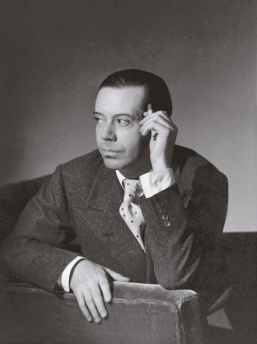






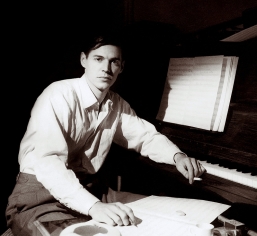

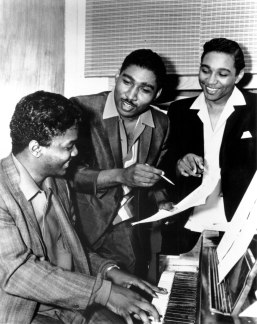

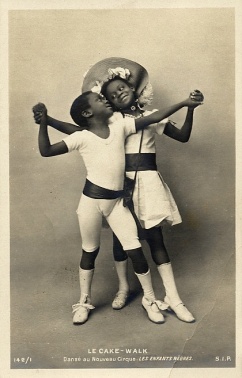
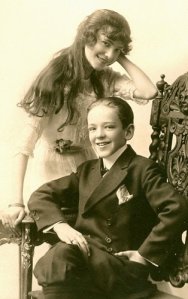

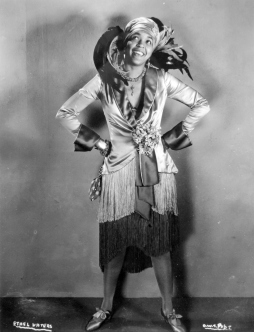






Apr 27, 2010 @ 07:39:31
When was this interview recorded?
LikeLike
Apr 27, 2010 @ 14:44:39
Hi Carmen,
When I posted this interview, which I’d found accidentally while searching for something else, I had no information as to when the recording took place. I imagined that it was part of a Paul Whiteman memoirs set of recordings. Today I did a bit of hunting and found that the interview is an extract from a set of recordings called George Gershwin Remembered, which is an hour-long radio documentary first aired by the Canadian Broadcasting Corporation in the spring of 1961. In a review of George Gershwin Remembered at AllMusic.com (link updated, 11/30/2021), by William Ruhlmann, the reviewer says:
[The narrator and interviewer] Tony Thomas assembles a biography and appreciation of George Gershwin by using his own commentary, rare and vintage recordings, and interviews with several people who knew Gershwin. Ira Gershwin, the composer’s brother, is heard reminiscing about their early days together, sounding as if he is reading from a prepared text. Movie composer Alfred Newman, a friend of George Gershwin’s, also seems to be reading as he recalls their relationship. But Fred Astaire, another Gershwin confidante, clearly was interviewed by Thomas, his remarks coming off as less formal and more spontaneous. This is also true of fellow songwriter Arthur Schwartz and bandleader Paul Whiteman, who provides a detailed account of the rushed circumstances surrounding the composition of “Rhapsody in Blue.”
I presume the interview with Paul Whiteman took place not long before it was first broadcast in 1961.
Cheers, Jim
LikeLike
Jan 26, 2011 @ 10:44:32
Gershwin ripped off numerous passages in “Rhapsody in Blue” from Eubie Blake’s “Memories of You” written many years before..
The central core of rythym used in Rhapsody was Blake’s. Its not exactly a news flash that musicians have been “borrowing” from other musicians from time immemorial, and nobody (that I know of) would dispute Gershwin’s compositional aptitude, but I’d like to see some recognition of the actual creator of the music (Blake) who ironically is nearly unknown by comparison to Gershwin. Credit where credit’s due.
LikeLike
Jan 26, 2011 @ 15:47:18
Thomas,
“Rhapsody in Blue” was written and published in 1924, while “Memories of You” (Eubie Blake, Andy Razaf) was introduced by singer Minto Cato in the 1930 Broadway show Lew Leslie’s Blackbirds of 1930. I’ve not found any information that supports your claim. When did Blake compose “Memories of You?” Jazzstandards.com says he met Razaf in 1930 during production of Blackbirds. However, Jazzstandards appears to give the wrong date for the opening of the show. IBDb says it opened October 22, 1930 and closed in December 1930 after 57 performances.
Regards,
doc
LikeLike